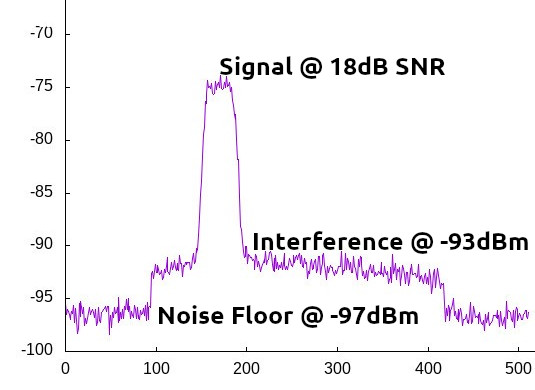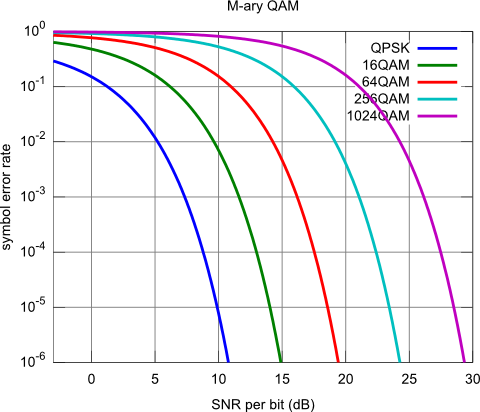
As communications systems have grown in capacity, they have expanded in physical bandwidth in an increasingly congested RF spectrum.
Effective digital communications planning requires more than knowledge of antennas and propagation fundamentals. It now needs an intimate understanding of bandwidth and noise to co-exist and communicate efficiently.
Unfortunately, this key aspect of modern RF systems is often taught badly, or in some cases not at all, leading to often unwelcome surprises for equipment operators in the field. As a technology and market agnostic platform we’ve observed poor bandwidth knowledge in many markets, but notably MANET and 5G, both of which are accelerating the deployment of wideband systems, often with little to no planning beyond a topographic map study.
Both radio markets are evolving from narrower channel technologies, which in the case of MANET and the VHF Combat-Net-Radio (CNR) it replaces was measured in KHz so they need to update their theory training content and associated software to convey these potentially complex topics to novice students in a digestible manner.
Teaching noise
As bandwidth increases, so does channel noise. This simple concept might seem easy to remember for a student but without visual aides, and since the demise of analog systems; audible aides, it is hard to demonstrate in practice.
A good teacher may show visual aides like noise charts, FFTs, spectograms and a bad one may show some Johnson-Nyquist formulas buried within an all-day powerpoint which is not helpful except for getting paid.
A student can tick the right box on their exam(s) but spend their career wasting bandwidth and struggling to establish communications because they believe that big is better – it isn’t, or worse still, that bandwidth has no effect on the coverage since that’s a function of transmitted power and/or height. Having an intimate understanding of the interplay between bandwidth, receiver sensitivity and thermal noise will make spectrum users more efficient, effective and considerate.
| Bandwidth MHz | Thermal noise (dBm) |
|---|---|
| 0.1 | -124 |
| 1 | -114 |
| 2 | -111 |
| 4 | -108 |
| 8 | -105 |
| 16 | -102 |
| 32 | -99 |
| 64 | -96 |
Which waveform is best?
Comparing digital radios is complicated due to the myriad of features, waveforms and software.
Given a particular waveform it will have characteristics such as a minimum Signal-to-Noise Ratio (SNR) value which it requires to achieve a symbol rate necessary to deliver a fast data link for example. This dB value must sit proud of the noise floor so if the noise floor is high at -90dBm, coverage will be reduced and conversely, by taking it to somewhere quiet eg. -110dBm, the coverage will improve by 20 decibels – a huge difference.
To compare waveforms precisely, the same noise floor should be simulated, initially, with fixed values to eliminate random error in field testing. The sensitivity values will be somewhere between 3 and 20dB depending on what the waveform and target Bit-Error-Rate (BER) is.
Bit Error Rate (BER) describes the ratio of errors in a data stream. An ok value is 10-3 or 1 bad bit in a 1000 or 0.1%. This increases with noise until a signal is unrecoverable. For more on BER see an older blog here.
For ground radios designed for noisy environments, a BER of 10-2 (1 error in 100 or 1%) is used here for extracting our planning thresholds from a chart of SNR curves. For an airborne system without obstacles this could be higher, for example 10-5.
A narrow waveform eg. QPSK gives better coverage and works better in noisy conditions. This is the fallback telemetry mode used in many data radios.
A wide waveform eg. QAM64 is capable of better throughput and delivering high bandwidth streams such as HD video.
The best radio is one which can use different waveforms to satisfy both coverage and capacity.
Modelling bandwidth: A tutorial
Quick reference guide
A quick reference guide for using bandwidth and noise is available here. For other guides see here.
Conclusion
Bandwidth and noise is essential knowledge for anyone deploying wideband systems or comparing waveforms.
RF theory training can be enhanced (and needs to be) with visual tooling to let students quickly observe the impact of different inputs in a controlled environment with templates to minimise user error.
For information on how SOOTHSAYER can help with signals training see here.




